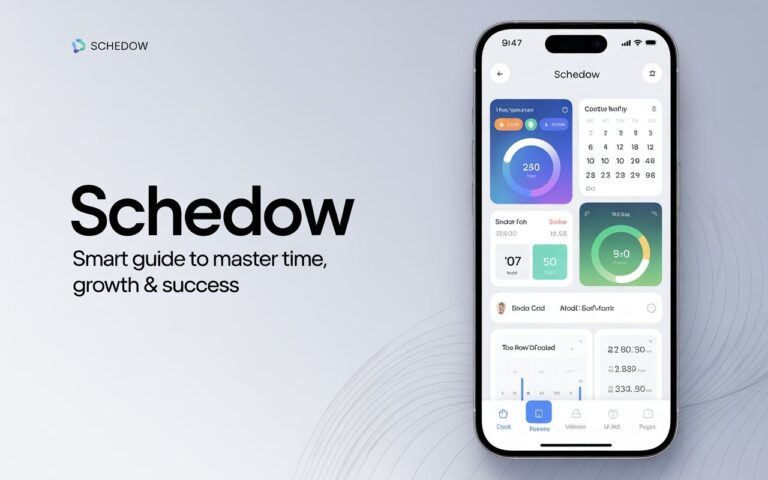Odoo vs Traditional ERP: Which Fits Your Business Better?
Choosing the right enterprise software is no longer an optional decision for growing companies. It is one that directly shapes efficiency, scalability, and long-term profitability.
Whether you are a mid-sized manufacturer, a retail operation, or a service-driven enterprise, the system you choose to manage operations influences how quickly you can adapt to new demands, respond to customers, and maintain margins.
The conversation often comes down to a critical choice: Odoo vs traditional ERP systems. On one side, Odoo offers a modular, flexible, and integration-friendly platform. On the other, legacy ERP solutions such as SAP, Oracle, or Microsoft Dynamics bring decades of stability and market presence.
Partnering with an experienced Odoo development company can help make sense of this decision by clarifying not only what Odoo can do, but how it compares to older systems still dominant in the market.
This article takes a close, data-backed look at both, weighing strengths, limitations, and practical considerations so you can make the right decision for your business.
The Core Difference Between Odoo and Traditional ERP
ERP (Enterprise Resource Planning) has been around for decades, designed to unify functions like finance, HR, supply chain, and production into one system of record. Traditional ERP platforms tend to be large, monolithic solutions that require heavy customization, lengthy implementations, and significant licensing costs.
They are often built with a “one-size-fits-all” architecture, forcing businesses to adapt processes to the system rather than the other way around.
Odoo takes a different approach. It is an open-source, modular platform where businesses can start with a handful of apps, such as accounting, CRM, or manufacturing, and expand gradually.
This means smaller companies can adopt ERP principles without the upfront cost and operational disruption of traditional systems.
At its core, the distinction lies in flexibility versus structure. Traditional ERPs emphasize stability, control, and standardization, while Odoo emphasizes adaptability, modularity, and affordability.
Cost Considerations: What Businesses Need to Know
Traditional ERP
The cost of legacy ERP implementations often runs into six or seven figures. Licensing fees, server infrastructure, third-party consultants, and multi-year implementation timelines add to the burden. For enterprises with thousands of employees and complex compliance needs, this expense can be justified.
But for many mid-sized businesses, the price tag makes these systems less accessible.
Odoo
Odoo’s pricing model is significantly more approachable. Because of its modular structure, businesses pay for the apps they need and add more over time. The open-source edition reduces licensing costs, while the enterprise edition provides additional support and functionality for a fraction of traditional ERP licensing fees.
Implementation is also faster, often completed in weeks or months rather than years.
Verdict: Odoo appeals to organizations looking for scalability without financial strain. Traditional ERP remains suitable for large enterprises with budgets that prioritize stability over cost efficiency.
Implementation and Deployment Speed
Traditional ERP
Implementation can take 12 to 36 months depending on the size of the company and the scope of customization. These projects often require cross-departmental alignment, external consultants, and extensive training cycles.
Odoo
Deployments are faster because of modular adoption. A business might start with inventory and CRM, then add accounting and HR later. This phased approach reduces disruption and delivers value early in the process. Smaller businesses can often go live in under six months, while mid-sized enterprises typically achieve full implementation within a year.
Verdict: For companies that cannot afford multi-year delays before realizing ROI, Odoo’s speed provides a clear advantage.
Flexibility and Customization
Traditional ERP
Legacy systems are highly configurable but customization often requires expensive consultants and extensive coding. Even minor workflow changes can lead to lengthy development cycles.
In practice, this means many companies adjust operations to fit the ERP rather than modifying the ERP to reflect their operations.
Odoo
Odoo is built for customization. With an active developer community and open-source foundation, modules can be extended or adapted to fit unique requirements. Custom workflows, integrations with third-party apps, and industry-specific modules are easier to build and deploy.
Verdict: Businesses seeking agility find Odoo more accommodating, especially when paired with experienced developers.
Integration Capabilities
Traditional ERP
Integration with other systems can be challenging. Legacy ERPs were designed before modern APIs and cloud-native services became standard. While integrations are possible, they are typically costly and time-intensive.
Odoo
Integration is one of Odoo’s defining strengths. Its modular design and open APIs make it easier to connect with payment gateways, eCommerce platforms, warehouse systems, and even IoT devices. Real-time data synchronization ensures smoother workflows across the enterprise.
Verdict: For businesses where integration with diverse tools is non-negotiable, Odoo holds a significant edge.
Scalability
Traditional ERP
Scaling traditional ERP systems requires extensive investment in licenses, infrastructure, and training. They are built to handle large, global operations but are less flexible in incremental scaling.
Odoo
Scalability is modular. Companies can start small and grow their system over time, adding apps and features as needs expand. This makes Odoo appealing for businesses on a growth trajectory, from startups to mid-sized enterprises scaling into global operations.
Verdict: Traditional ERP works best for businesses already operating at global scale, while Odoo allows scaling as the business grows.
User Experience and Adoption
Traditional ERP
Legacy ERPs are powerful but often criticized for complex interfaces. Training is extensive, and user adoption can be slow. For organizations with high staff turnover or distributed teams, this creates friction.
Odoo
Odoo focuses on modern, user-friendly design. Its interface is closer to consumer-grade apps, reducing training time and encouraging faster adoption. For many businesses, this translates directly into higher productivity.
Verdict: If user adoption speed matters, Odoo is a more accessible choice.
Maintenance and Support
Traditional ERP
Support often comes directly from the vendor or authorized partners. Costs for ongoing maintenance are significant, and system upgrades can disrupt operations.
Odoo
With both an enterprise support model and a large developer community, Odoo offers more accessible support options. Updates are regular and less disruptive, and businesses can choose between vendor-backed enterprise support or community-driven solutions.
Verdict: Odoo provides a more adaptable support structure, especially for mid-sized businesses with constrained IT resources.
Case Studies: Where Each Approach Works Best
1. Multinational Transport Company (SAP → Odoo)
EBTrans, operating across 14 countries, successfully replaced SAP with Odoo. The migration brought enhanced visibility, automated workflows, faster supplier invoice processing (using OCR), eco-friendly document management, and improved team engagement.
2. Food Manufacturer with End-to-End Digital Transformation
A leading food manufacturer had struggled with manual and fragmented systems for accounting, traceability, and operations.
With Odoo, they streamlined order intake, manufacturing planning, inventory validation, sourcing, distribution, and accounting, bringing core operations into a unified, automated process.
The Role of Expert Partners
Odoo’s flexibility is a major advantage, but realizing its full potential requires technical knowledge. Businesses often look for providers who can configure modules, integrate third-party systems, and adapt workflows.
Here, specialized Odoo development services play a crucial role by bridging the gap between software capabilities and business goals.
ERP in the Next Decade
As industries digitize further, ERP systems must evolve to support AI-driven insights, real-time analytics, and decentralized workforces. Traditional ERPs are adding cloud functionality and predictive features, but their size makes them slower to adapt.
Odoo’s open structure makes it well-positioned to integrate emerging technologies more quickly. For businesses considering long-term competitiveness, this adaptability cannot be ignored.
Wrapping it Up!
There is no universal answer to the Odoo vs traditional ERP debate. It depends on business size, budget, regulatory requirements, and growth trajectory.
- Choose Traditional ERP if your organization operates globally, requires deep compliance features, and has the budget for extensive implementations.
- Choose Odoo if your business values speed, modular adoption, integration capabilities, and cost-effectiveness.
The decision is ultimately about fit. For many mid-sized businesses and growth-oriented enterprises, Odoo offers a balance of functionality, scalability, and affordability that traditional ERP cannot match.
For larger corporations with entrenched processes, traditional ERP continues to provide stability at scale.






